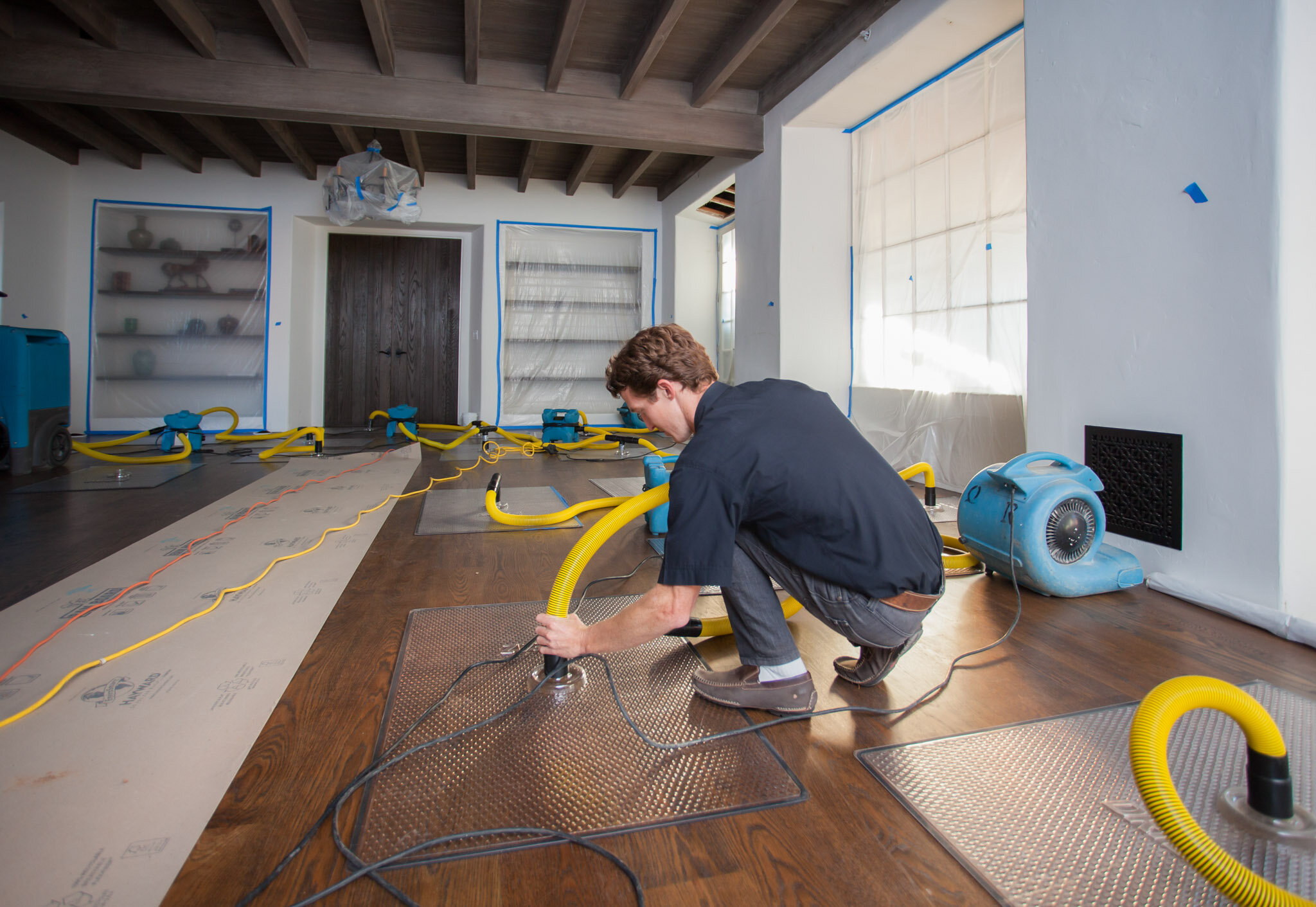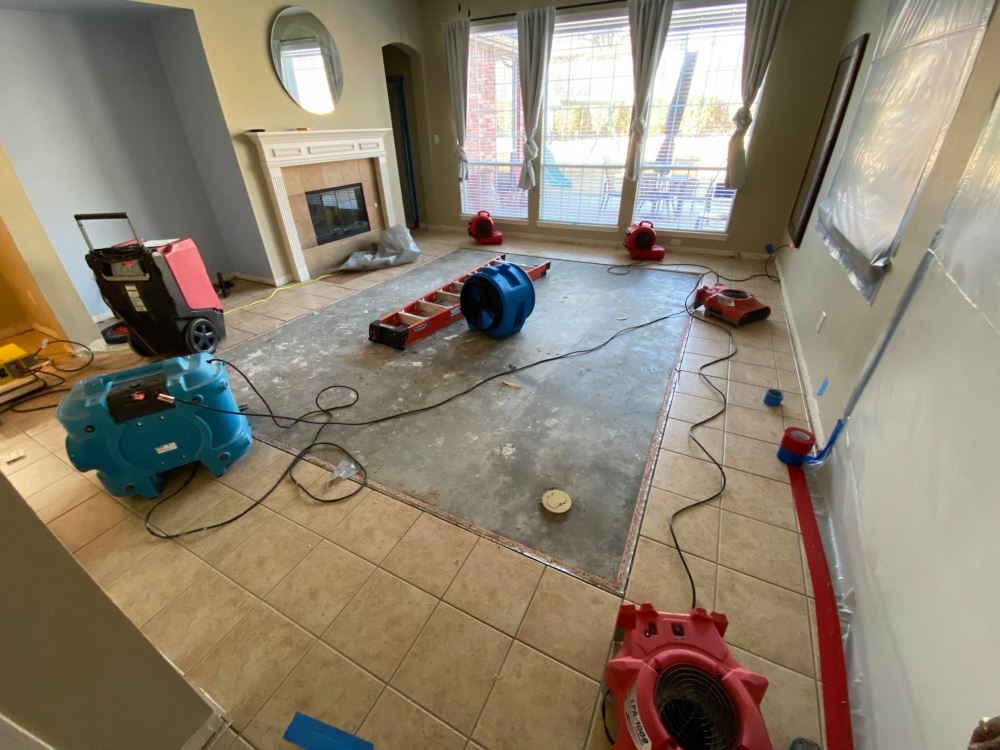Water Damage Restoration 101: Comprehending the Process and Cost
Water damage can strike unexpectedly, leaving home owners in a state of confusion. Comprehending the restoration procedure is essential for effective recovery. From evaluating the damage to selecting the appropriate provider, each action affects the overall outcome and price. Factors such as the sort of water damage and urgency likewise play a substantial role. What are the specific strategies used in restoration, and exactly how can one plan for possible expenditures?
Kinds Of Water Damage

First Assessment and Examination

Water Removal Methods
Complying with the first assessment, reliable water extraction techniques are employed to minimize damage and avoid further issues. These methods involve the usage of specialized equipment such as submersible pumps and industrial-grade vacuums - Mold Remediation After Water Damage. The choice of approach relies on the quantity of water existing and the type of products impacted. For standing water, submersible pumps are generally made use of for rapid elimination, while vacuums are suitable for removing water from rugs and upholstery. In addition, advanced techniques like water removal floor coverings may be used for hard-to-reach locations - Flood Cleanup Services. The objective is to remove as much water as possible, lessening the possibility for mold growth and architectural damage. Trigger and reliable water extraction is important in the general water damage restoration process
Drying and Dehumidification Process
When the water extraction is total, the drying and dehumidification procedure becomes crucial to bring back the damaged location. This phase generally utilizes industrial-grade dehumidifiers and air movers to efficiently minimize moisture degrees. The dehumidifiers pull in wet air, eliminating excess humidity, while air moving companies circulate air to speed up dissipation. Surveillance equipment is usually utilized to track moisture and temperature level levels, making sure perfect drying conditions. The period of this process can differ relying on the degree of the water damage and ecological variables. It is vital to completely completely dry all impacted materials, including wall surfaces, floor covering, and furnishings, to avoid mold growth and architectural damage. Correct implementation of this action is crucial for a successful restoration outcome.
Cleansing and Disinfecting Damaged Locations
When the drying out procedure is total, an extensive preliminary analysis and evaluation of influenced locations is vital to recognize contamination degrees. Effective cleansing techniques and proper products have to after that be employed to get rid of debris and spots. Finally, sanitization and sanitation methods are important to assure that harmful microorganisms are removed, restoring the area to a safe condition
Initial Evaluation and Inspection
Before beginning any kind of restoration initiatives, a complete initial analysis and evaluation of the influenced locations are vital for efficient cleansing and disinfecting. This process entails determining the level of water damage, identifying the source of the water invasion, and reviewing the materials influenced. Assessors usually try to find indications of mold and mildew development, architectural stability problems, and harmed valuables. The assessment likewise includes examining moisture levels using specific devices to ensure no surprise water pockets continue to be, as these can result in further issues. Recording the searchings for is crucial for preparing the following action in the reconstruction process. A comprehensive first assessment allows reconstruction professionals to devise a targeted technique for reliable cleaning and sanitizing, inevitably decreasing damage and health and wellness threats.
Cleansing Strategies and Products
Effective cleansing and sterilizing of water-damaged areas need a range of products and techniques customized to the specific products impacted. For permeable surfaces like drywall and carpeting, removal techniques are vital to get rid of excess dampness, complied with by deep cleaning with specialized detergents. Non-porous products such as ceramic tile or metal can be cleaned making use of commercial-grade cleaners that properly remove impurities. Vapor cleaning is one more efficient technique, specifically for rugs and furniture, as it uses heats to remove bacteria and mold (Flood Cleanup Services). Furthermore, environmentally friendly items are progressively popular for their safety and security and efficiency - Mold Remediation After Water Damage. Inevitably, selecting the suitable cleansing methods and items not just ensures prompt cleanliness but additionally help in stopping further damage and carcinogen related to water intrusion
Sanitization and Disinfection Methods
When resolving water damage, appropriate sanitization and disinfection approaches are vital to ensure the security and wellness of the damaged environment. After preliminary cleansing, surface areas need to be treated with appropriate anti-bacterials to eliminate virus, mold and mildew, and bacteria that grow in damp problems. Common techniques include using EPA-approved chemical anti-bacterials, which can be applied through splashing or cleaning techniques. Additionally, ultraviolet (UV) light systems can effectively sanitize locations by neutralizing bacteria without harsh chemicals. The choice of approach frequently depends upon the type of materials influenced and the level of contamination. Eventually, detailed sanitization not only restores a secure living area yet additionally helps prevent future wellness threats related to lingering dampness and mold development.

Repair Work and Restoration Options
Assessing the damage brought on by water exposure is important for figuring out the proper fixings and reconstruction choices. Property owners might face various problems, consisting of harmed drywall, deformed floor covering, and jeopardized architectural aspects. Relying on the level of the damage, repair services may include changing areas of drywall, mounting new flooring, or strengthening architectural beam of lights. In situations of severe damage, total replacement of afflicted products may be needed. Additionally, professional conservators frequently recommend using wetness meters to evaluate concealed wetness levels prior to deciding on the most effective strategy. It is very important to act without delay to stop mold growth and more damage. Selecting the best options not only recovers the residential or commercial property but also guarantees long-term safety and capability.
Factors Affecting Restoration Expenses

The level of water damage directly impacts the reconstruction sets you back homeowners can expect to incur. Aspects such as the resource of the water, the duration of exposure, and the affected products significantly influence rates. Tidy water damage more info from a damaged pipeline is normally less expensive to bring back contrasted to damage created by sewer. Furthermore, the degree of contamination determines the requirement for specialized cleaning and disposal solutions, better boosting expenditures. Geographical location likewise contributes, as local labor rates and schedule of reconstruction solutions can differ. Finally, the urgency of the action influences costs; quicker treatments typically bring about decrease total expenses by stopping additional damage. Understanding these aspects is crucial for home owners when approximating remediation prices.
The 3 key types of water damage are classified based on contamination levels: tidy water, gray water, and black water. A thorough preliminary assessment and assessment are important actions in the water damage repair procedure. For standing water, submersible pumps are usually used for fast elimination, while vacuum cleaners are excellent for removing water from carpetings and upholstery. The degree of water damage directly influences the repair costs homeowners can anticipate to incur. Clean water damage from a broken pipe is normally less costly to restore contrasted to damage triggered by sewage.